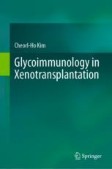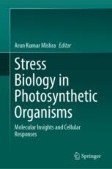Search
Search Results
-
Genetic Model Organisms
Model organisms are non-human species used for studying biological processes in laboratories. They are selected based on advantageous properties such...
-
Concept of Chimeric Organisms Such as Human/Non-Human Chimera (HNH-Chimera)
As an another direction in the xenotransplantation, chimeric organisms are recently represented in the regenerative medicine using the stem cells...
-
Diversifying the concept of model organisms in the age of -omics
In today’s post-genomic era, it is crucial to rethink the concept of model organisms. While a few historically well-established organisms, e.g....
-
An automated workflow for multi-omics screening of microbial model organisms
Multi-omics datasets are becoming of key importance to drive discovery in fundamental research as much as generating knowledge for applied...

-
Exploring microproteins from various model organisms using the mip-mining database
Microproteins, prevalent across all kingdoms of life, play a crucial role in cell physiology and human health. Although global gene transcription is...

-
AlphaFold2 reveals commonalities and novelties in protein structure space for 21 model organisms
Deep-learning (DL) methods like DeepMind’s AlphaFold2 (AF2) have led to substantial improvements in protein structure prediction. We analyse...

-
Model organisms and systems in neuroethology: one hundred years of history and a look into the future
The Journal of Comparative Physiology lived up to its name in the last 100 years by including more than 1500 different taxa in almost 10,000...

-
Genomes: Molecular Maps of Living Organisms
Based on sequence comparisonsSequence comparisons, special algorithms assemble the sequence fragments of modern sequencing techniques. After...
-
Combined Effect of Gamma Radiation and Heavy Metals on Some Living Organisms
The purpose of this study was to systematise scientific publications on the combined effect of gamma radiation and heavy metals on living organisms....

-
Biodiversity-based development and evolution: the emerging research systems in model and non-model organisms
Evolutionary developmental biology, or Evo-Devo for short, has become an established field that, broadly speaking, seeks to understand how changes in...
-
Lepidopteran insects: emerging model organisms to study infection by enteropathogens
The in vivo analysis of a pathogen is a critical step in gaining greater knowledge of pathogen biology and host–pathogen interactions. In the last...

-
Imidazolium salts are effective for the control of Culex quinquefasciatus larvae and demonstrate low impact on non-target organisms
The current resistance status of mosquitos to common insecticides raises the concern for innovative formulations with novel active ingredients,...

-
Spatial assortment of soil organisms supports the size-plasticity hypothesis
The size-plasticity hypothesis posits that larger size organisms are less plastic in their metabolic rates and, therefore, are more strongly...

-
Photosynthetic Organisms: Their Existence in Evolutionary Prospective
Photosynthesis is a very old process on this Earth. Based on fossil discoveries and chemical evidence, cyanobacteria first appeared 2.5–2.6 billion...
-
Red List for British seaweeds: evaluating the IUCN methodology for non-standard marine organisms
The IUCN Red List of Threatened Species is an authoritative tool in biodiversity conservation. Whilst IUCN criteria have been applied successfully to...

-
Serial Lift-Out: sampling the molecular anatomy of whole organisms
Cryo-focused ion beam milling of frozen-hydrated cells and subsequent cryo-electron tomography (cryo-ET) has enabled the structural elucidation of...

-
Causal phase-dependent control of non-spatial attention in human prefrontal cortex
Non-spatial attention is a fundamental cognitive mechanism that allows organisms to orient the focus of conscious awareness towards sensory...

-
Coding variants in mouse and rat model organisms: mousepost and ratpost
Mice and rats are the most commonly used vertebrate model organisms in biomedical research. The availability of a reference genome in both animals...

-
Revisiting mutagenesis at non-B DNA motifs in the human genome
Non-B DNA structures formed by repetitive sequence motifs are known instigators of mutagenesis in experimental systems. Analyzing this phenomenon...

-
Non-coding RNAs in human health and disease: potential function as biomarkers and therapeutic targets
Human diseases have been a critical threat from the beginning of human history. Knowing the origin, course of action and treatment of any disease...

